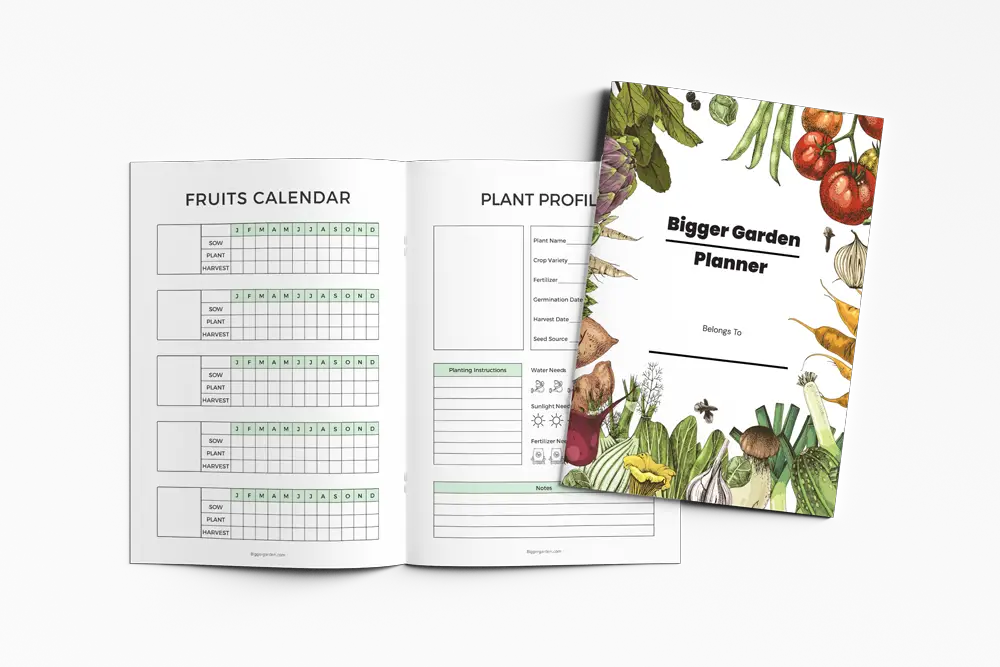11 Stunning Flowers That Start With Y + Growing Guides

This post follows our research editorial guidelines.

Yearning for a burst of yellow in your garden? You’re in for a treat as we delve into the lush world of flowers starting with the letter Y! Yielding a garden of vibrant yellows, these 11 stunning flowers not only add a yonder of color but also bring an essence of youthful zest.
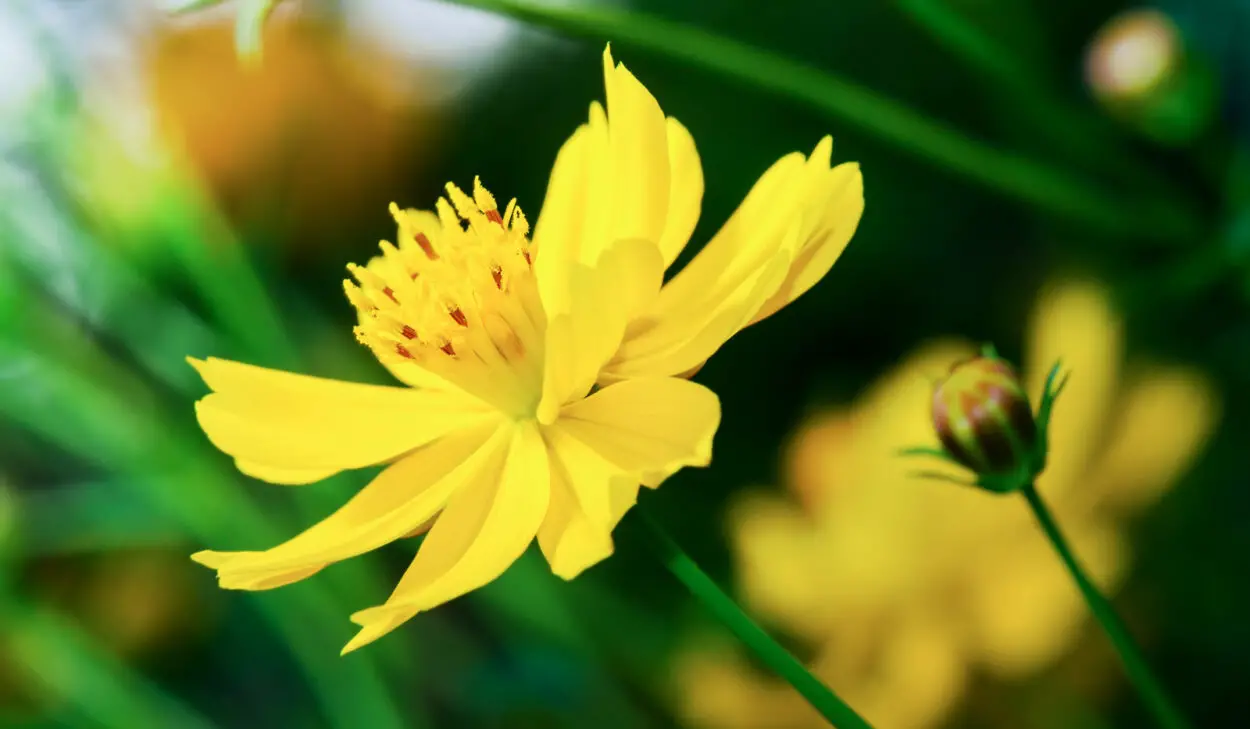
From the yarrow’s healing touch to the yucca’s desert elegance, these yellows yank your attention and yodel the arrival of sunny days.
Quickly Find Flowers Starting With Y
1. Yarrow (Achillea millefolium)
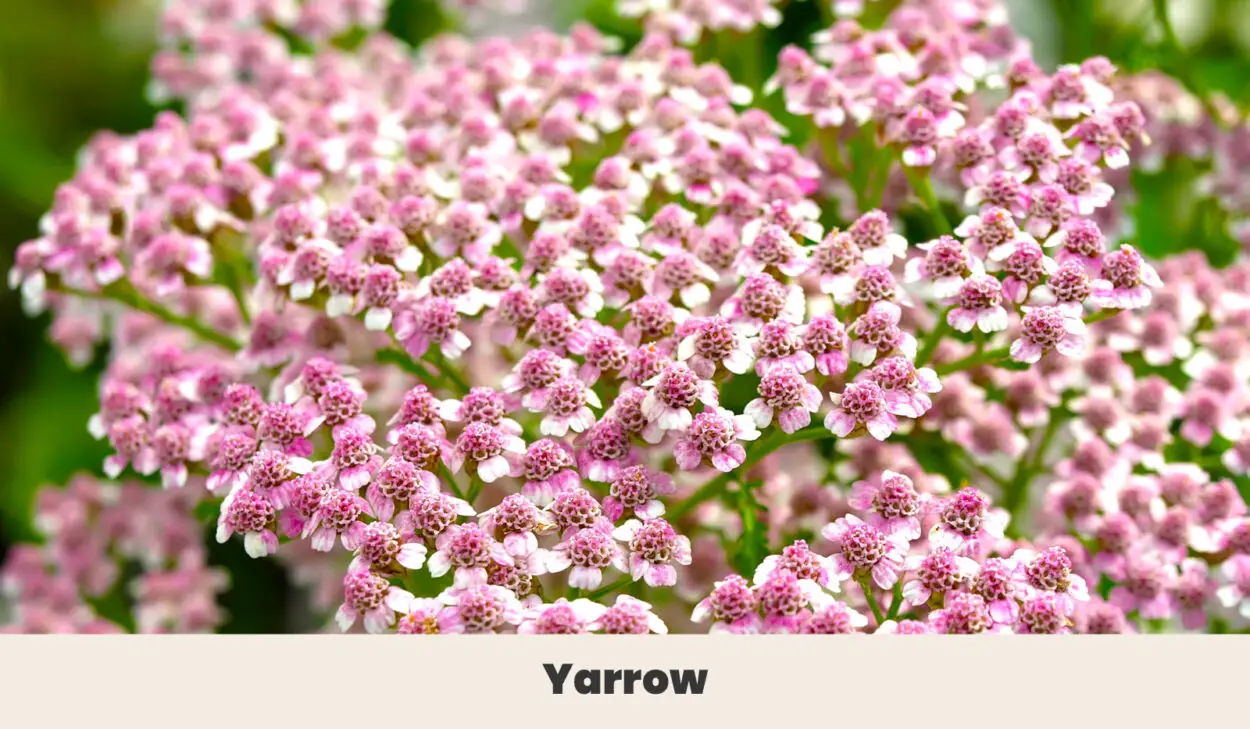
Yarrow has delicate pink, yellow, white or even red flowers, feathery leaves, and a rich historical background intertwined with symbolism and tradition.
Known as Achillea millefolium, it’s believed to be named after the legendary Greek hero Achilles, who used Yarrow to treat soldiers’ wounds during the Trojan War.
Yarrow requires minimal care, as it’s a hardy plant that thrives in various soil conditions and tolerates drought.
| Botanical Name: | Achillea millefolium |
| Growth Rate: | Moderate |
| Native Range: | Europe, Asia, and North America |
| Hardiness Zones: | 3-9 |
| Soil Needs: | Well-drained, fertile soil |
| Exposure: | Full sun |
| Blooming Period: | Summer |
2. Yellow Pitcher Plant (Sarracenia flava)

The Yellow Pitcher Plant, Sarracenia flava, is a fascinating carnivorous plant native to the southeastern United States.
The plant’s elongated, trumpet-shaped pitchers often have a vibrant shade of yellow, acting as beacons to lure unsuspecting prey.
Caring for the Yellow Pitcher Plant involves providing ample sunlight, acidic soil, and a consistent water supply.
| Botanical Name: | Sarracenia flava |
| Growth Rate: | Slow |
| Native Range: | Southeastern United States |
| Hardiness Zones: | 5-9 |
| Soil Needs: | Acidic, nutrient-poor soil |
| Exposure: | Full sun to part shade |
| Blooming Period: | Spring to early summer |
3. Yucca (Yucca filamentosa)
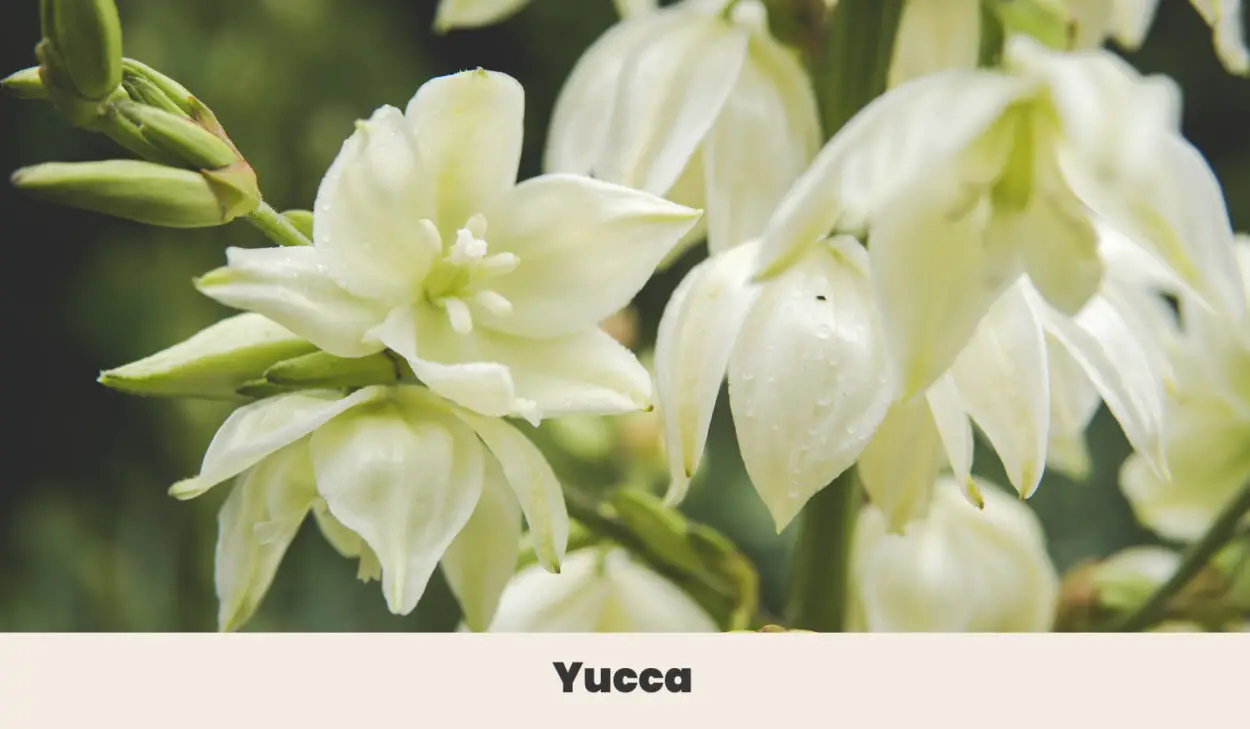
Yucca filamentosa, commonly known as Yucca, is a striking plant native to the arid regions of North America.
The historical significance of this plant can be traced back to Native American cultures, where Yucca played a multifaceted role in their daily lives.
The fibrous leaves of the yucca plant were utilized for weaving baskets, creating ropes, and making textiles, showcasing the plant’s versatility.
Caring for Yucca involves providing well-draining soil, abundant sunlight, and minimal water, mirroring its natural desert habitat.
| Botanical Name: | Yucca filamentosa |
| Growth Rate: | Slow to moderate |
| Native Range: | Southeastern United States |
| Hardiness Zones: | 4-11 |
| Soil Needs: | Well-drained soil, tolerant of poor soil conditions |
| Exposure: | Full sun to part shade |
| Blooming Period: | Late spring to summer |
4. Yellow Poppy (Glaucium flavum)
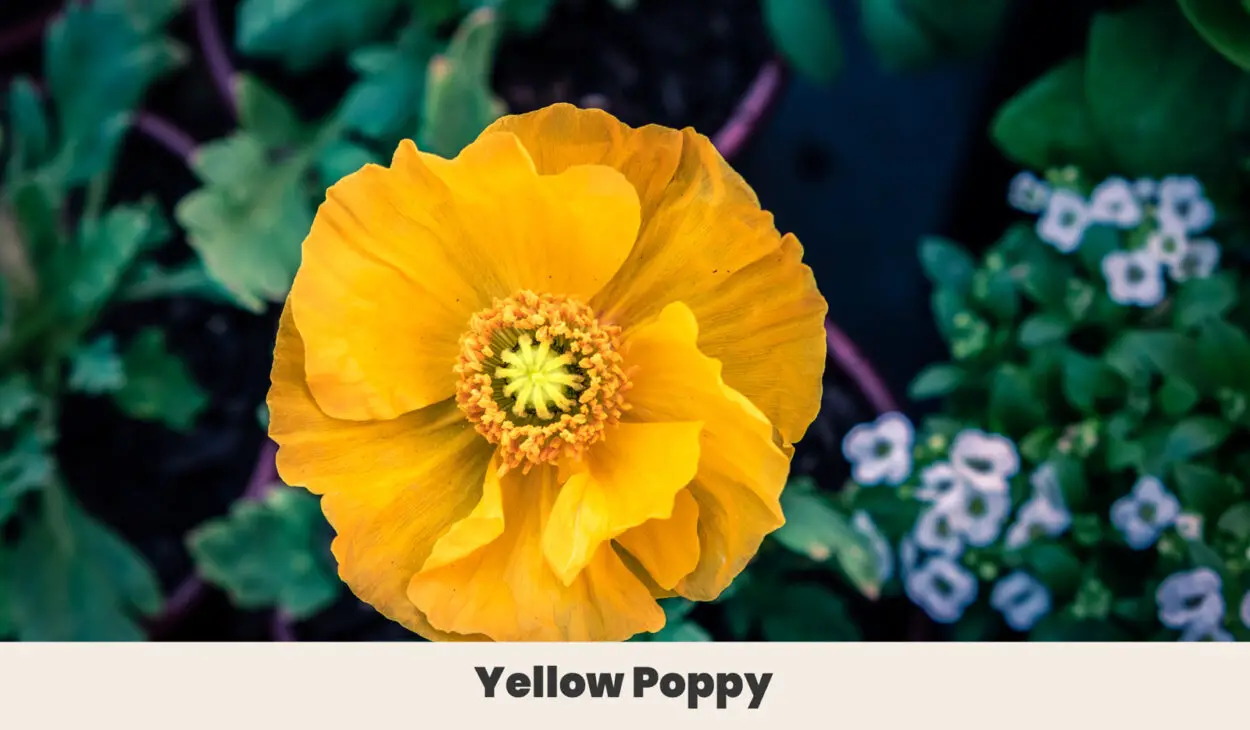
Glaucium flavum, commonly known as the Yellow Poppy, is a stunning wildflower found in coastal regions of Europe and North Africa.
The historical background of this flower is steeped in folklore and legends, with vibrant yellow petals evoking a sense of joy and vitality.
Symbolically, the Yellow Poppy is associated with wealth, success, and fertility.
Caring for this plant involves providing well-drained soil and a lot of sunlight. They’re known for their resilience, thriving in rocky or sandy environments.
| Botanical Name: | Glaucium flavum |
| Growth Rate: | Moderate |
| Native Range: | Coastal regions of Europe and North Africa |
| Hardiness Zones: | 5-9 |
| Soil Needs: | Well-drained, sandy soil |
| Exposure: | Full sun |
| Blooming Period: | Spring to summer |
5. Yellow Bells (Tecoma stans)
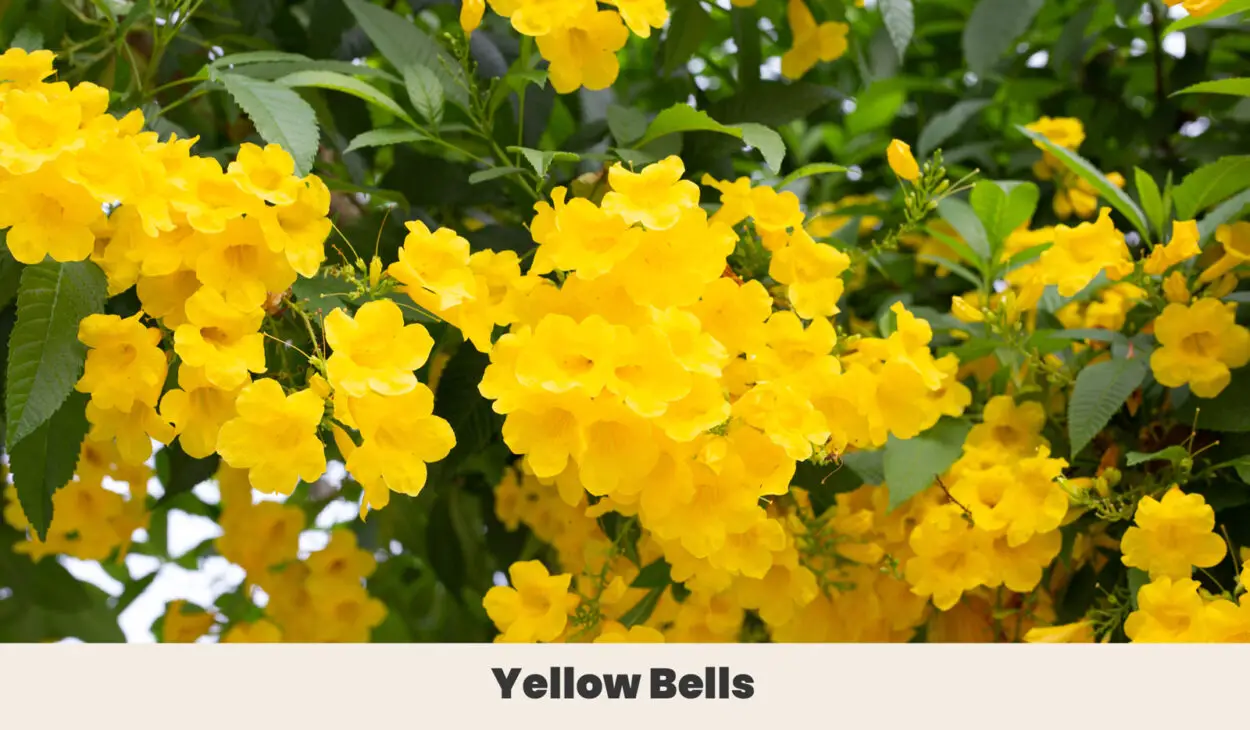
Tecoma stans, commonly known as Yellow Bells or Yellow Elder, is a vibrant flowering shrub native to the Americas.
This plant’s historical background is intertwined with cultural significance, as it’s the national flower of the Bahamas and a state flower of the U.S. Virgin Islands.
This plant represents endurance and strength, whereas the bright yellow, bell-shaped flowers symbolize resilience and joy.
Caring for Yellow Bells involves providing well-drained soil, regular watering, and ample sunlight.
| Botanical Name: | Tecoma stans |
| Growth Rate: | Fast |
| Native Range: | North, Central, and South America |
| Hardiness Zones: | 8-11 |
| Soil Needs: | Well-drained, fertile soil |
| Exposure: | Full sun |
| Blooming Period: | Spring to fall |
6. Yellow Jasmine (Gelsemium sempervirens)
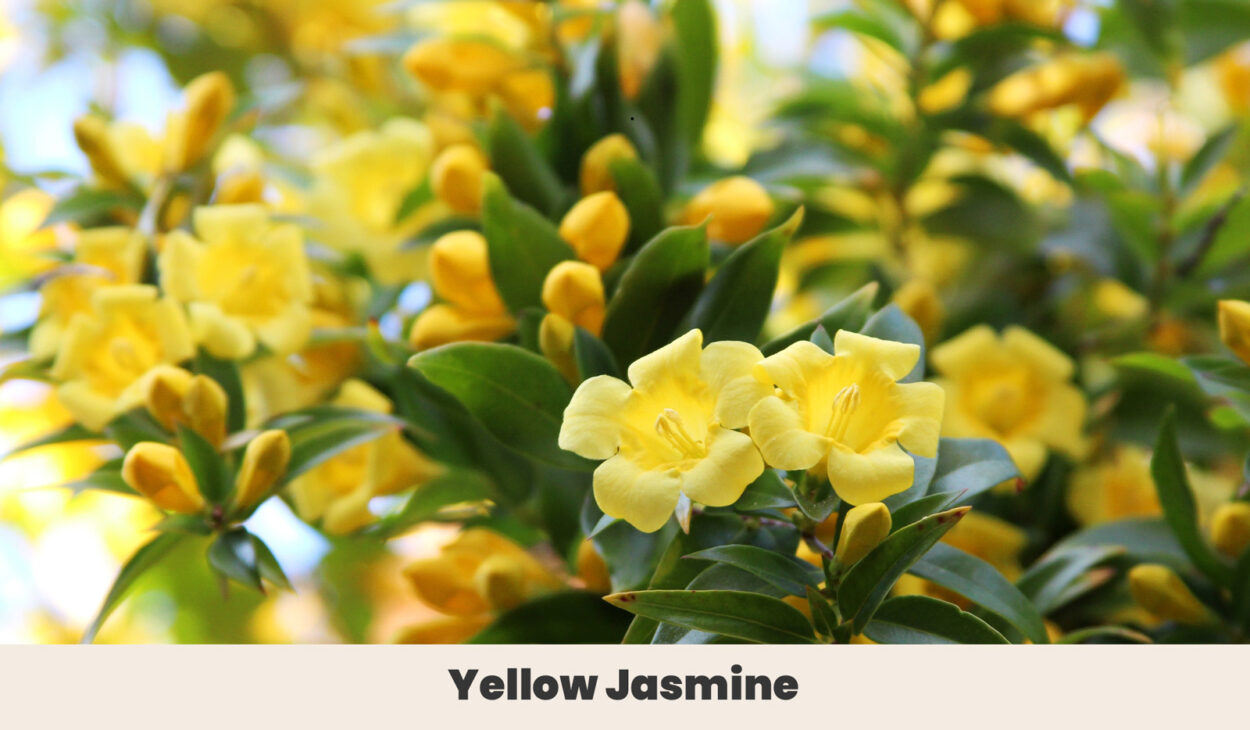
Gelsemium sempervirens, commonly known as Yellow Jasmine or Carolina Jessamine, is a captivating climbing vine native to the southeastern United States.
Symbolically, Yellow Jasmine embodies grace, elegance, and love.
Caring for Yellow Jasmine involves providing a sturdy support structure for the vine to climb as it reaches impressive heights. It thrives in well-drained soil, ample sunlight, and moderate watering.
| Botanical Name: | Gelsemium sempervirens |
| Growth Rate: | Moderate to fast |
| Native Range: | Southeastern United States |
| Hardiness Zones: | 7-10 |
| Soil Needs: | Well-drained, fertile soil |
| Exposure: | Full sun to part shade |
| Blooming Period: | Late winter to spring |
7. Yellow Rose (Rosa spp.)
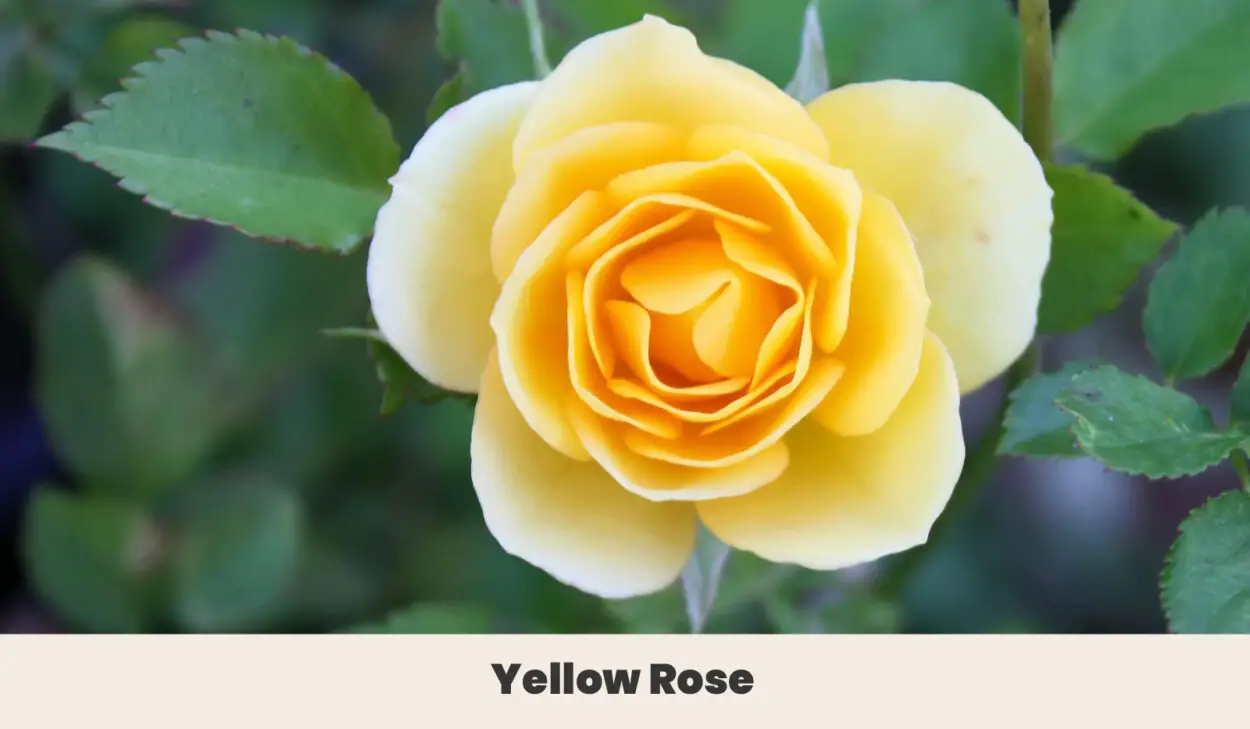
The Yellow Rose, a member of the Rosa spp., is a timeless flower steeped in historical significance and symbolism.
The rose has been cultivated for centuries because it’s pretty and fragrant. Additionally, the Yellow Rose represents friendship, joy, and new beginnings.
Caring for Yellow Roses involves providing well-drained soil, ample sunlight, and regular watering.
| Botanical Name: | Rosa spp. |
| Growth Rate: | Moderate to fast |
| Native Range: | Various species, worldwide |
| Hardiness Zones: | Varies depending on the species |
| Soil Needs: | Well-drained, fertile soil |
| Exposure: | Full sun |
| Blooming Period: | Spring to fall, depending on the species |
8. Yellow Trillium (Trillium luteum)
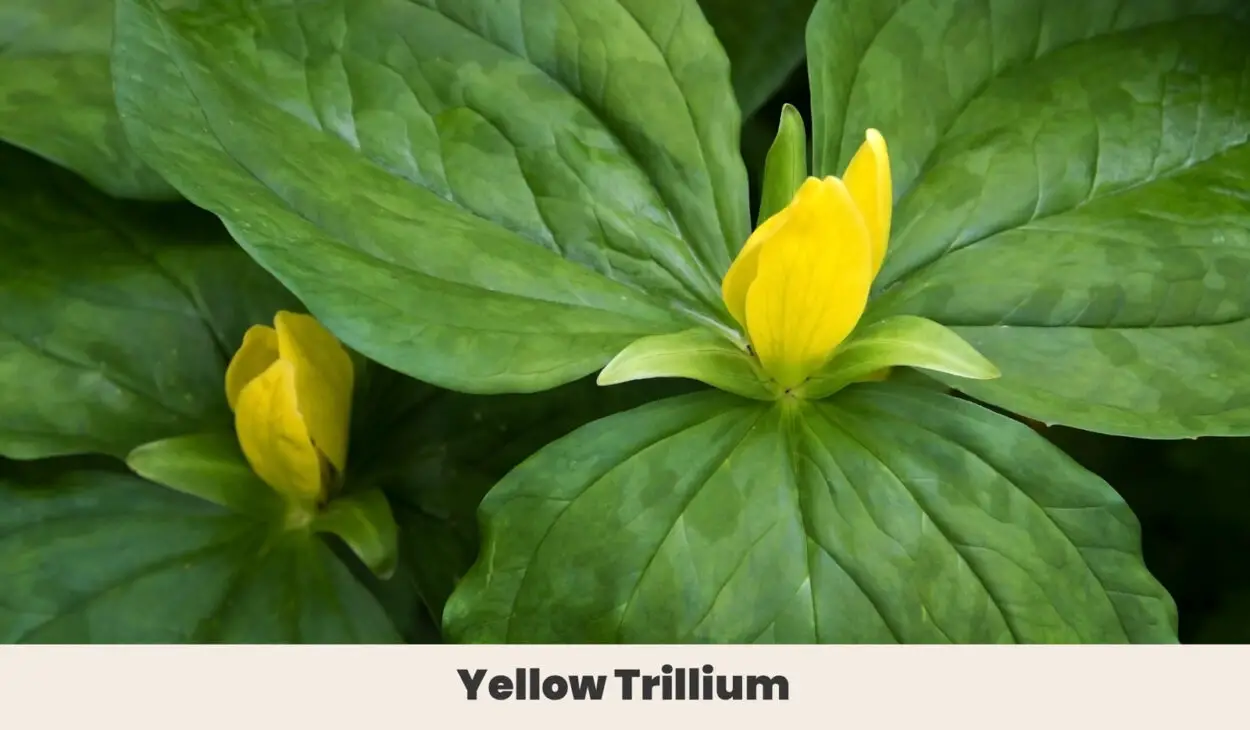
Trillium luteum, or Yellow Trillium, is a captivating woodland wildflower native to eastern North America. It represents purity, renewal, and the delicate balance of nature.
Caring for Yellow Trillium involves recreating its native woodland habitat with moist, well-drained soil and dappled shade. It’s a delicate, low-maintenance plant, so it’s a great choice for naturalized gardens and woodland landscapes.
| Botanical Name: | Trillium luteum |
| Growth Rate: | Slow |
| Native Range: | Eastern North America |
| Hardiness Zones: | 4-9 |
| Soil Needs: | Moist, well-drained soil with organic matter |
| Exposure: | Part shade to full shade |
| Blooming Period: | Spring |
9. Yellow Firecracker (Crossandra infundibuliformis)
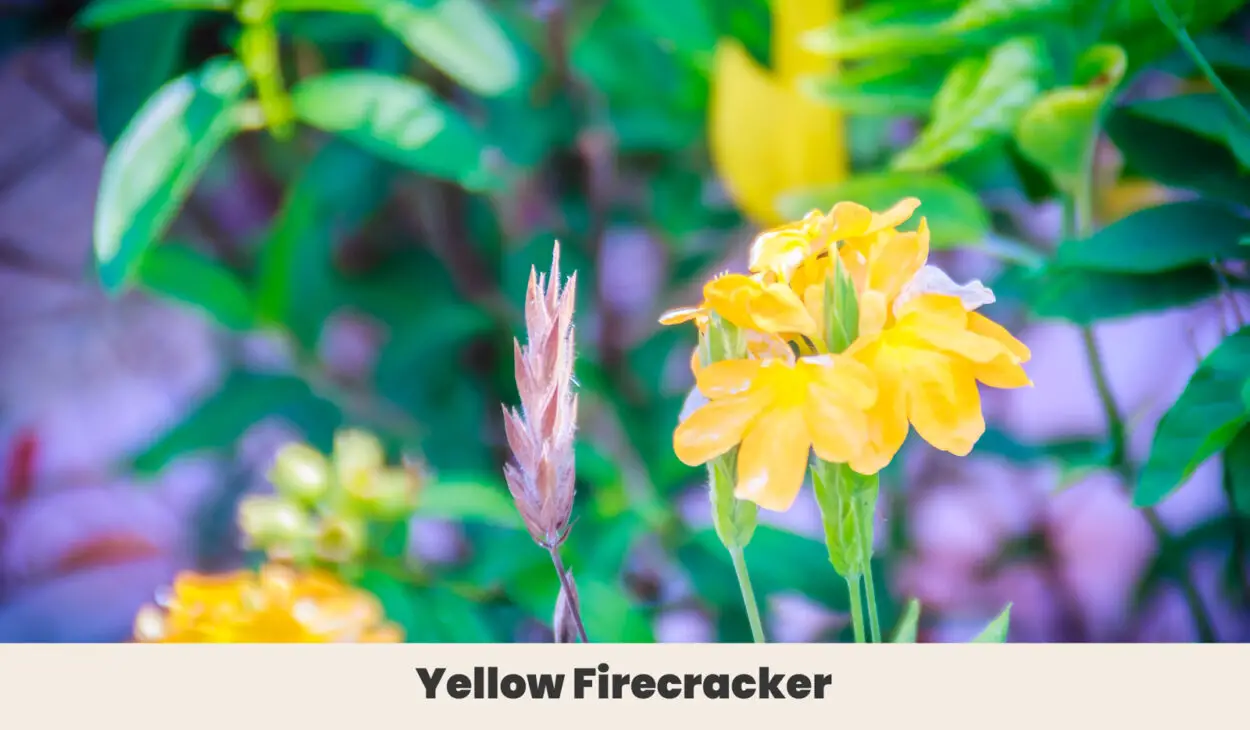
Crossandra infundibuliformis, commonly known as Yellow Firecracker, is a vibrant tropical plant native to India and Sri Lanka, so it’s been used in traditional Ayurvedic medicine.
Caring for Yellow Firecracker involves providing well-drained soil, partial shade, and regular watering.
| Botanical Name: | Crossandra infundibuliformis |
| Growth Rate: | Moderate |
| Native Range: | India and Sri Lanka |
| Hardiness Zones: | 9-11 |
| Soil Needs: | Well-drained, fertile soil |
| Exposure: | Partial shade |
| Blooming Period: | Spring to fall |
10. Yellow Cosmos (Cosmos sulphureus)
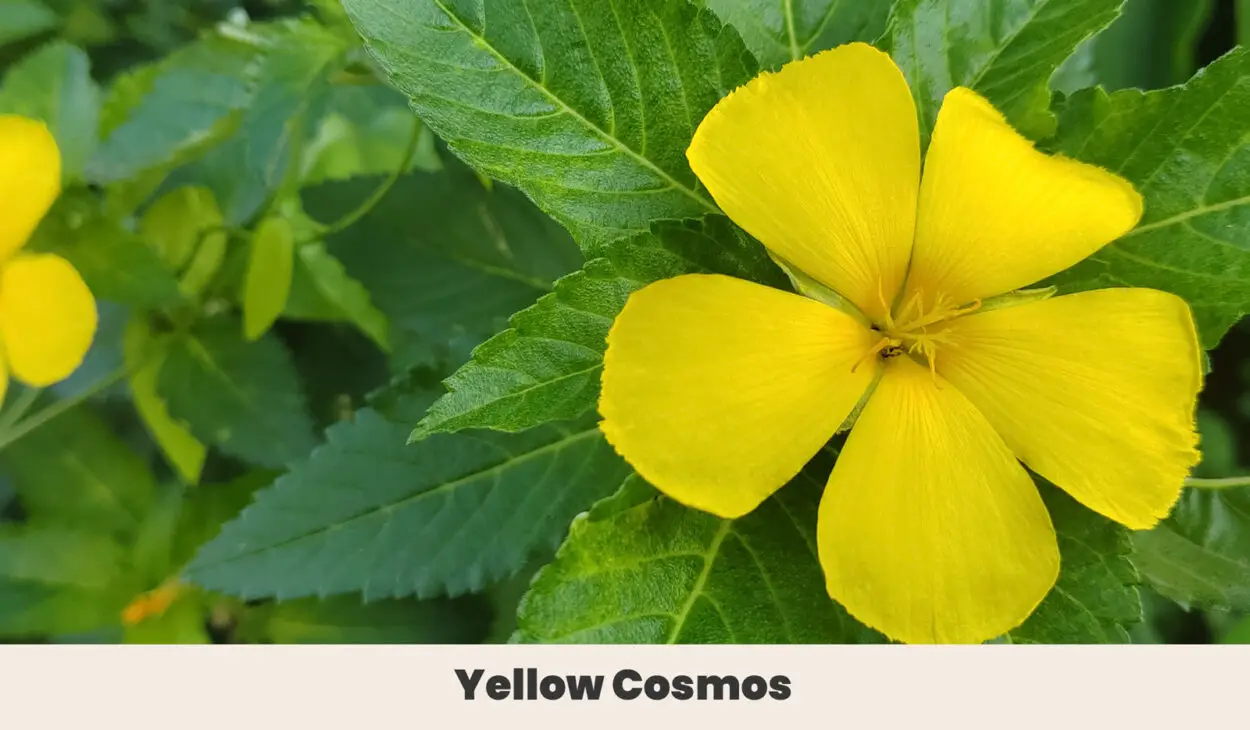
Cosmos sulphureus, commonly known as Yellow Cosmos, is a delightful annual flower native to Mexico and Central America. It represents joy, harmony, and optimism.
The plant’s delicate fern-like foliage adds a lovely touch to gardens, floral arrangements, etc. Caring for Yellow Cosmos involves providing well-drained soil, ample sunlight, and regular watering.
| Botanical Name: | Cosmos sulphureus |
| Growth Rate: | Fast |
| Native Range: | Mexico and Central America |
| Hardiness Zones: | 9-11 |
| Soil Needs: | Well-drained, average soil |
| Exposure: | Full sun |
| Blooming Period: | Summer to fall |
11. Yellow Flame (Peltophorum pterocarpum)

Peltophorum pterocarpum, or Yellow Flame or Copperpod, is a majestic flowering tree native to tropical regions of Asia. It symbolizes abundance, prosperity, and resilience.
Caring for Yellow Flame involves providing well-drained soil, ample sunlight, and regular watering.
| Botanical Name: | Peltophorum pterocarpum |
| Growth Rate: | Fast |
| Native Range: | Tropical regions of Asia |
| Hardiness Zones: | 10-11 |
| Soil Needs: | Well-drained, fertile soil |
| Exposure: | Full sun |
| Blooming Period: | Spring to summer |
Final Thoughts
In conclusion, these stunning Y flowers offer beauty and diversity.
With our growing guides, you can cultivate these remarkable blooms and infuse your surroundings with their elegance.
Embrace their unique needs, unleash your creativity, and let the beauty of these flowers inspire your gardening endeavors.
